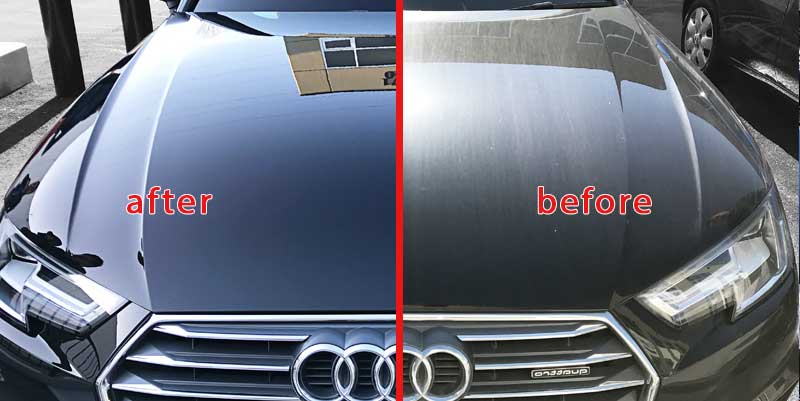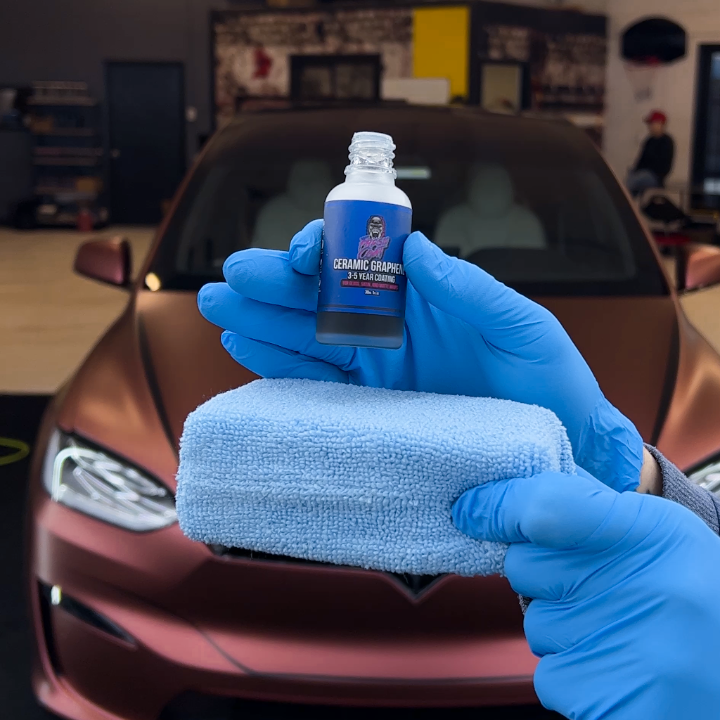The Ultimate Guide to Ceramic Coating: Benefits and Application Techniques
The Ultimate Guide to Ceramic Coating: Benefits and Application Techniques
Blog Article
Recognizing the Scientific Research Behind Ceramic Coating for Boosted Vehicle Sturdiness
The scientific research of ceramic covering is transforming vehicle upkeep by supplying a powerful guard against extreme ecological variables. As we check out the complex structure and application procedure of ceramic finishes, we discover the secrets behind their superior protection and durability (ceramic coating). How does this compare to typical techniques, and what ramifications does it have for vehicle upkeep in the lengthy term?

Make-up of Ceramic Coatings
Ceramic finishes are mostly made up of silicon dioxide (SiO2), which is obtained from natural materials like quartz and sand. In enhancement to SiO2, ceramic coatings frequently integrate titanium dioxide (TiO2) for enhanced UV defense and raised resistance to environmental pollutants.
The solution of ceramic layers is a precise process where the focus of SiO2 can significantly influence the covering's efficiency. Higher SiO2 material typically leads to better longevity and hardness, adding to the layer's ability to stand up to scratches and chemical etching. The balance of elements is important; as well much SiO2 can make the coating fragile, while too little can jeopardize its protective residential properties.
Manufacturers may likewise incorporate extra substances, such as polysilazane, to boost adaptability and convenience of application. These ingredients improve the layer's hydrophobic residential or commercial properties, ensuring water and pollutants grain off the surface area easily. This crafted composition emphasizes the effectiveness of ceramic coverings in guarding a vehicle's exterior versus a selection of adverse conditions.
Application Process Explained
Using a ceramic covering to an automobile includes a number of critical steps, each necessary to ensuring optimum bond and performance of the safety layer - ceramic coating. The process starts with a complete clean and decontamination of the vehicle's surface to remove dust, gunk, and previous waxes or sealers. This action is crucial as any contaminants left externally can hinder the layer's ability to bond successfully
Complying with the initial cleaning, the next step entails brightening the lorry to remove any type of flaws, such as swirl marks or scratches. Sprucing up makes certain a smooth surface, which is vital for the finishing to stick effectively and provide a consistent coating. After brightening, a surface prep work spray is made use of to get rid of any continuing to be residues and make sure that the surface is completely tidy.

Protective Advantages
Frequently hailed for its phenomenal protective high qualities, a ceramic layer supplies numerous benefits that considerably improve car longevity. At its core, ceramic covering forms a hard, semi-permanent obstacle over an automobile's outside, which acts as a shield against numerous environmental risks.
Additionally, ceramic layers show hydrophobic homes, indicating they drive away water and help with a self-cleaning effect. This feature reduces the adherence of dirt and mud, streamlining maintenance and cleansing procedures. The finish's resistance to chemical etching further guarantees that the vehicle's surface continues to be unblemished despite direct click to read more exposure to extreme cleansing agents and contaminants.
In addition to these safety benefits, the ceramic layer improves a lorry's visual appeal by developing a glossy finish that emphasizes color depth and clearness. This not just maintains the lorry's aesthetic appeal however likewise adds to its lasting value by preserving the stability of its outside over time.
Contrasting to Typical Approaches
Unlike conventional approaches of car protection, such as waxing or sealers, ceramic coverings supply an even more long lasting and durable solution. Where waxes and sealants commonly supply a momentary layer of security, frequently needing reapplication every few months, ceramic finishings form a semi-permanent bond Resources with the car's paint. This bond develops a protective layer that is resistant to environmental pollutants, UV damage, and minor abrasions.
Conventional waxes are largely made up of all-natural components like carnauba wax, supplying a glossy surface but lacking the robust safety top qualities of ceramic coverings. Sealants, while artificial and offering slightly much better toughness than waxes, still drop brief in comparison to the strength and chemical resistance of ceramic coverings. The innovative innovation of ceramic layers integrates nanotechnology, which enables them to fill useful source in microscopic flaws in the paint surface, resulting in a smoother and a lot more hydrophobic surface.
In regards to application, ceramic layers require an even more careful procedure, usually necessitating specialist installation to make sure ideal efficiency. This contrasts with the fairly straightforward application of waxes and sealers, which can be used at home. Nonetheless, the superior defense and aesthetic improvement offered by ceramic coverings validate the financial investment for those seeking long-term vehicle preservation.
Long Life and Maintenance
Just how does the longevity of ceramic coverings translate right into ease of upkeep for lorry proprietors? The innovative solution of ceramic coverings gives a durable protective layer on the vehicle's surface area, which dramatically prolongs the life-span of the auto's outside coating.
Moreover, the hydrophobic nature of ceramic finishings enables water and other fluids to bead up and roll off the surface area, bring dirt and debris with them. This property lessens the build-up of pollutants, making routine cleaning a lot more efficient and less labor-intensive. Owners benefit from a consistently streamlined, shiny look with minimal effort. Nonetheless, while the finish itself is resilient, it is not completely maintenance-free. Routine assessments for damage and occasional reapplication are advised to make certain the safety layer continues to be undamaged. Therefore, ceramic finishings provide a useful balance between lasting toughness and simplified upkeep for automobile treatment.
Conclusion
Ceramic coatings, with their advanced chemical structure of silicon dioxide and titanium dioxide, give a formidable obstacle versus ecological damages, significantly improving lorry durability. The hydrophobic properties advertise self-cleaning, decreasing maintenance efforts and protecting aesthetic appeal. When contrasted to standard methods, ceramic coatings offer remarkable security against UV rays, oxidation, and chemical etching. This modern technology expands the life-span of vehicle outsides, making it a cutting-edge option for lasting preservation and marginal maintenance.
The solution of ceramic layers is a thorough process where the concentration of SiO2 can dramatically affect the coating's efficiency.Using a ceramic coating to a car includes numerous important steps, each essential to making sure optimum bond and efficiency of the safety layer.Typically hailed for its outstanding safety top qualities, a ceramic finishing uses many advantages that considerably improve vehicle longevity. The innovative formulation of ceramic finishings gives a robust safety layer on the vehicle's surface area, which dramatically prolongs the life expectancy of the vehicle's outside coating.Ceramic coverings, with their innovative chemical structure of silicon dioxide and titanium dioxide, supply an awesome barrier against ecological damages, dramatically boosting vehicle resilience.
Report this page